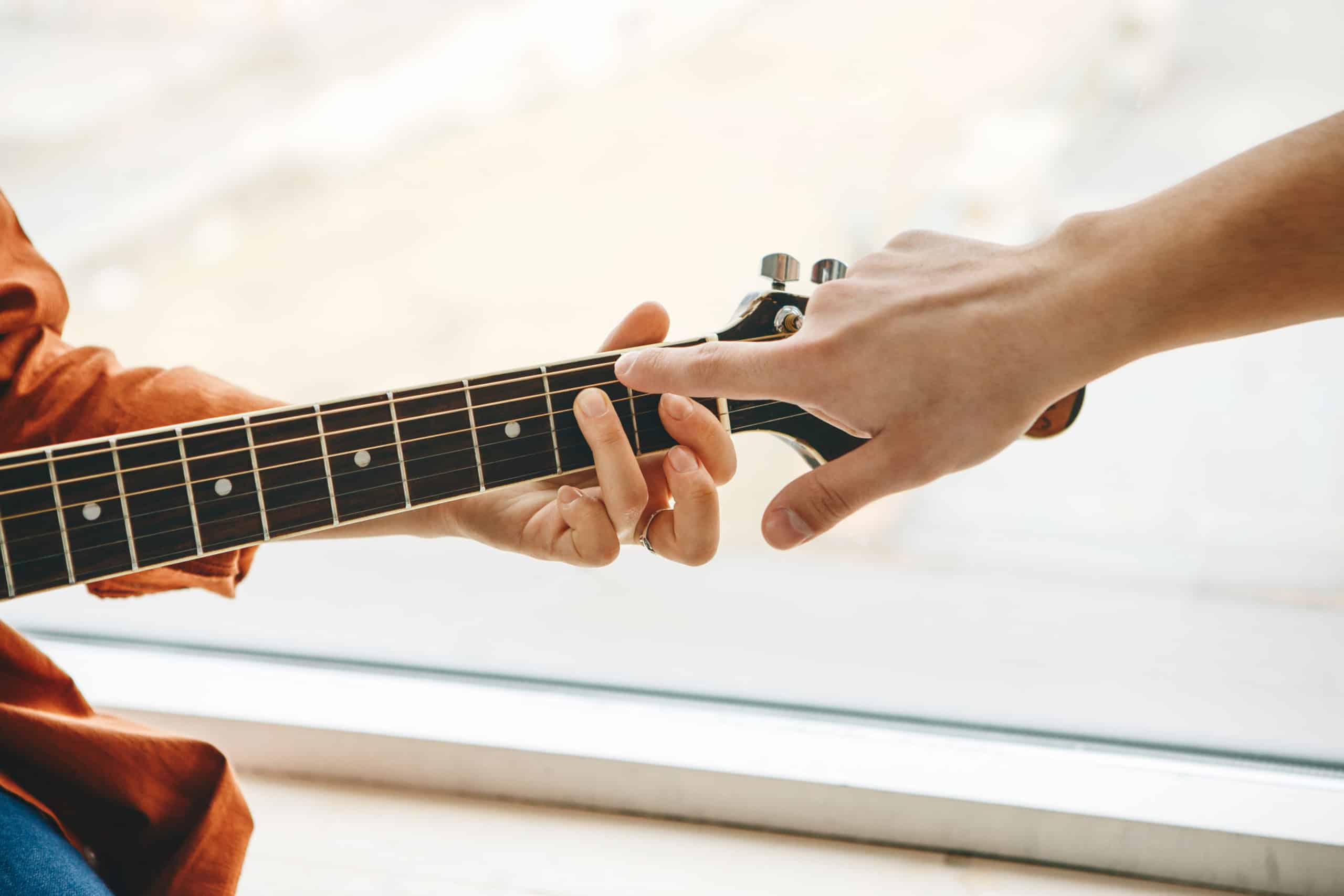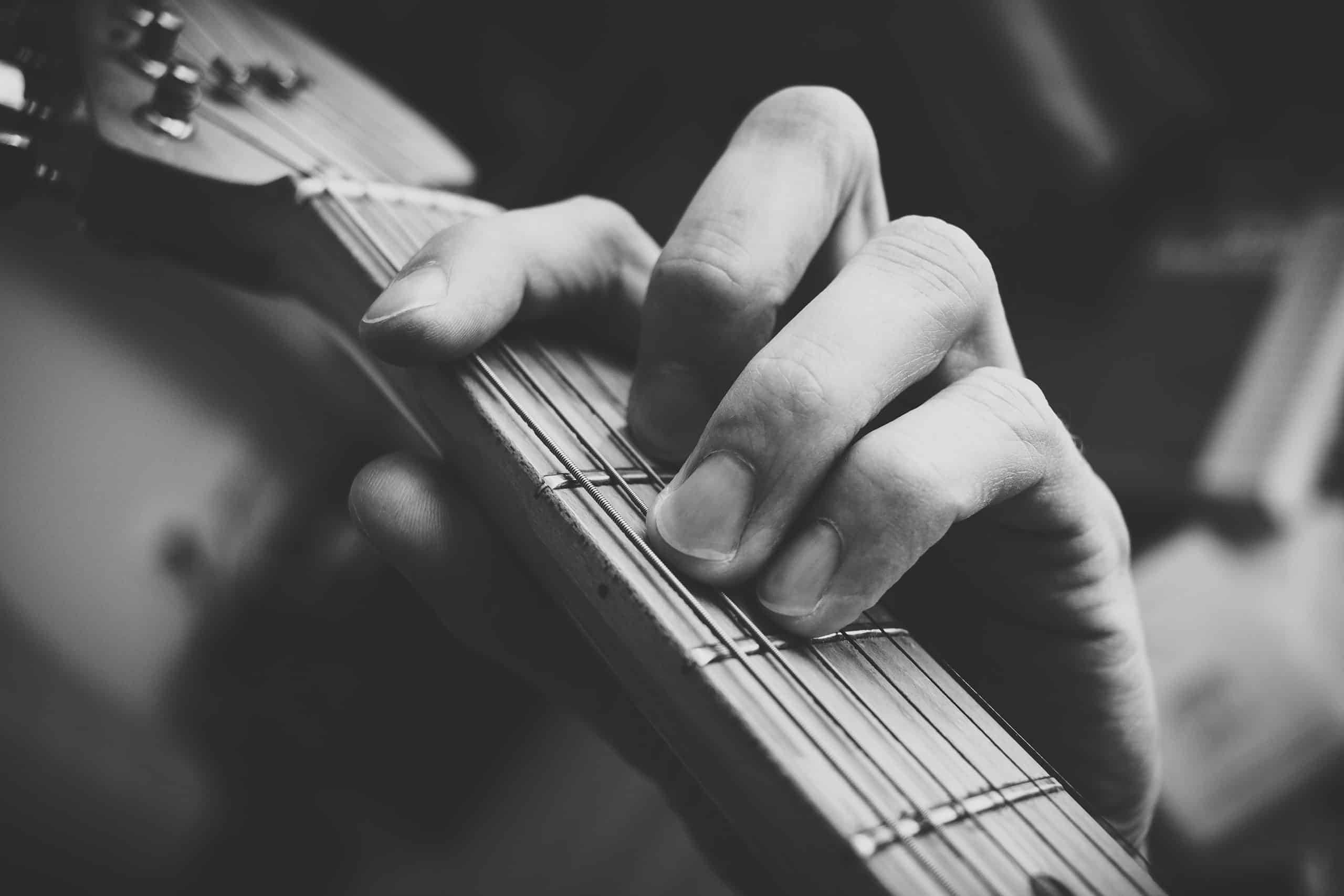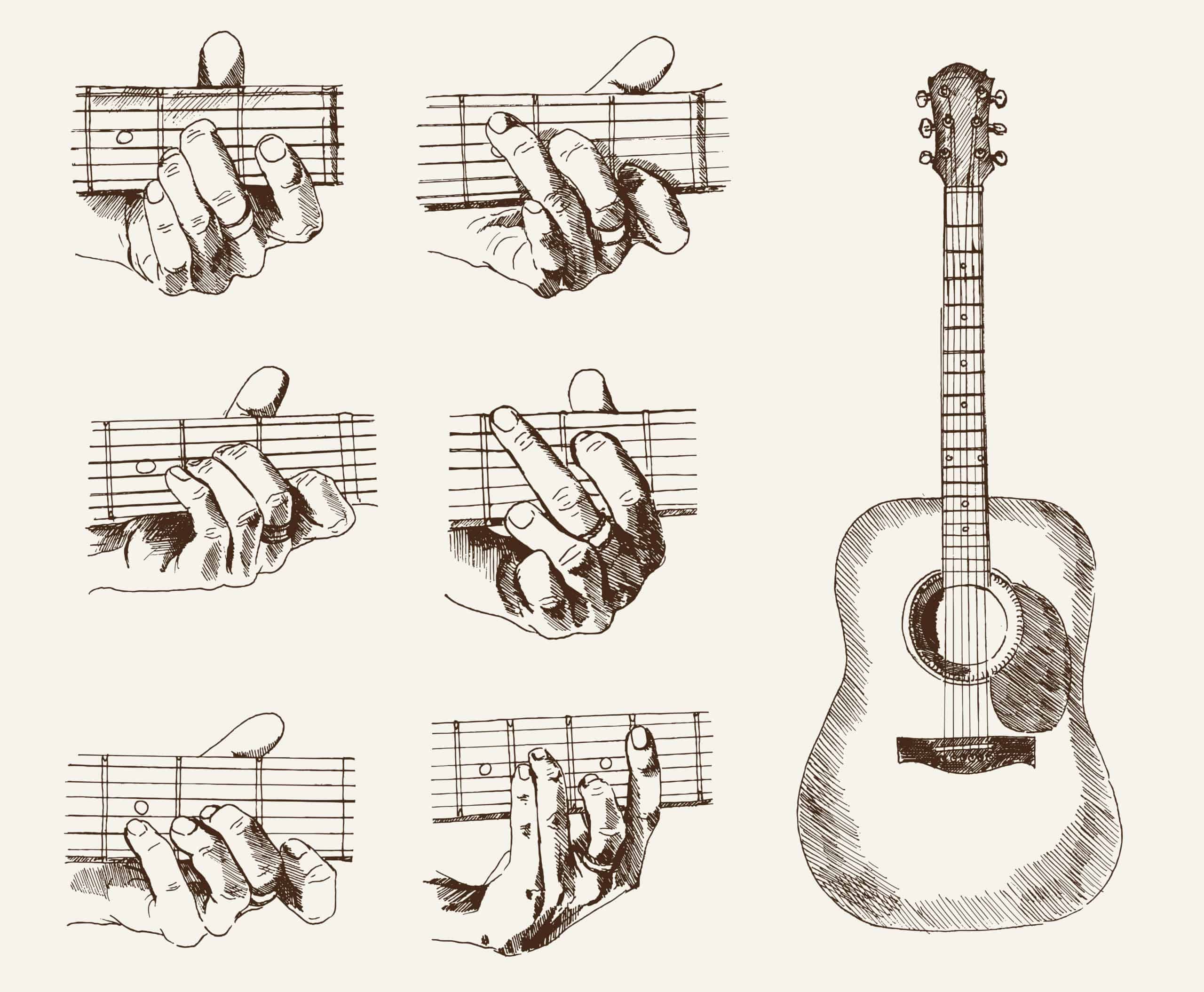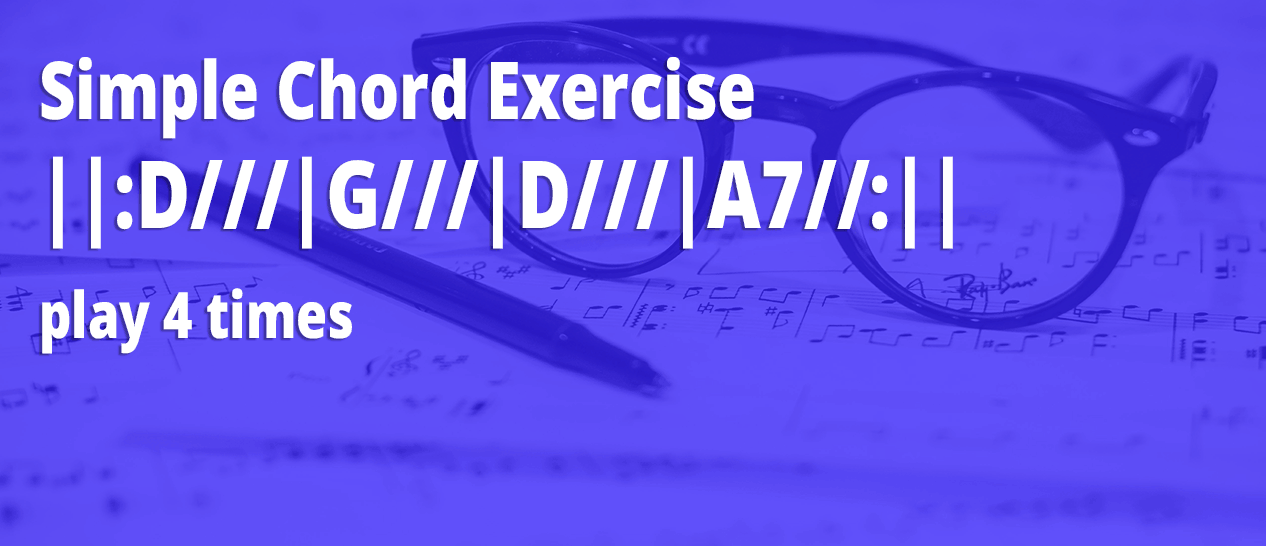
One of the biggest challenges novice guitar players face when learning to play guitar, is changing chords quickly and smoothly. I was just like you when I began playing, and thought this was a lofty goal to achieve—but I kept at it until I got it just right.
I have to be honest with you—changing guitar chords for beginners is a challenge, and something that some players may never fully master. However with lots of practice, perseverance, and more practice your odds of success significantly increase.
Of course you will need to learn a few tips and techniques to help you learn to play guitar, and master the basics of guitar chords for beginners. In order to make this process easy, I have created a step-by-step lesson that deconstructs each detail. I have used this technique when teaching my guitar students over the years—and have typed it out so that you can use it to practice at home too!
Learning how to jump from one chord to the next, without hesitation, without a change in tempo, and with all of your fingers at once is more challenging than meets the eye. If you have attempted to change chords, but end up fumbling and frustrated, you are not alone!
Start With The Basics

One of the biggest mistakes made when learning guitar chords for beginners is attempting to tackle advanced chord patterns. To increase your odds of success, let’s start with a basic chord pattern of: D – G – D – A.
Finger The Chords Individually

Start by practicing with just the D chord. Finger the D chord and look at the precise placement of your hand and fingers. Now visualize what proper placement looks like prior to returning all three fingers to the D chord one at a time. Then alternate placing your three fingers on one at a time, then all three at once. Continue to practice proper placement until you can do it right at least 80% of the time.
Now move to the G chord, and practice the same technique as you did with the D chord. Begin by looking at your hand and fingers as they are properly placed on the G chord. Make sure while practicing to shake your hands out as needed. Once you can visualize proper placement on the G chord, individually place your three fingers properly on your guitar to form the G chord. As with the D chord above, continue this process until you have proper placement the majority of the time.
Changing Chords

Now that you have established some muscle memory for both of the D chord and the G chord, it is time to attempt moving from the D chord, to and from the G chord. Begin by forming the G chord with all three fingers, then visualize how your hands and fingers will look on the D chord. When you are ready lift your fingers off of the fretboard, place them on the D chord. During this process do not focused on tempo, just take your time and ensure that you achieve proper placement. Continue moving back and forth between the D chord in the G chord until you are able to do it without much thought or repositioning.
Once you have mastered moving to and from the D chord and the G chord, add the A chord into the mix. Start by practicing with just the A chord. Finger the A chord and look at the precise placement of your hand and fingers. Now visualize what proper placement looks like prior to returning all three fingers to the A chord one at a time. Then alternate practicing placing your three fingers on one at time, then all three together. Continue to practice proper placement until you can do it the vast majority of the time.
Patience Is A Must When You Learn To Play Guitar
While the process may sound basic, it is an excellent way to master changing chords. Now that you have developed your muscle memory for the A chord, move back and forth between the D chord and the A chord. Finger the D chord, then visualize proper placement on the A chord. When you are ready lift your fingers off of the fretboard, with no concern of tempo, and place your fingers on the A chord. Continue to move back and forth between the D chord and the A chord, visualizing in-between as needed.
Adding Tempo
Once you can successfully achieve proper placement the vast majority of the time, it is time to add tempo. Your initial tempo will be slow and steady, and speed will come later. You will be working on: ||:D///|G///|D///|A///:|| (repeat at least 4x)

Take your time and strum straight down. Strum the D chord four times then move between the chords, strumming four times on each chord. Instead of stopping when you have successfully played straight through—continue to play the chords at least four times in a row.
If it is helpful you can use a metronome to keep your pulse—but you don’t have to if it complicates things for you. Just remember that your primary goal it to keep a slow, but steady pulse—without pausing between chords.
Strumming

When you are ready, the next step in learning guitar chords for beginners is to add a simple strum. I would suggest a |down - down/up - down - down/up| to begin with. To keep things simple, repeat the same chord pattern above.
As you master the chord pattern while strumming, you can increase the tempo by 4 beats per minute (4bpm)—a metronome may help.
Bonus Tips
As simple as the above steps for playing the guitar chords for beginners may sound—they are challenging and take time, patience, practice, and persistence. The bonus tips below will help you when learning to play the guitar: Relax! Many beginners tense their hands and fingers when playing—which is not only unnecessary, but can lead to sore hands and fingers.
1. Make sure you first learn how to create a crisp and clear sound when you finger a chord. Many newbies don’t take the proper time to do this when they learn to play the guitar, which creates a habit that is difficult to break.
2. When you add tempo, go as slow as you need—just find a tempo that you can commit to, without stopping or slowing down.
3. Consider using a metronome.
4. Don’t expect to master the guitar in a day, or a week—in fact it will take many months.
5. Practice makes perfect!
When learning the guitar chords for beginners above, start with the first step—and move on to the remaining steps as your skills continue to advance.
Tell Us What You Think - Please Comment Below!
We would love to hear your comments and questions. What specific things are you struggling with while learning guitar?
Add To Pinterest




that was a great lesson to give out thank you very much i will be on the look out for your next lesson again thnks.
You are welcome, Ramon. There’s more to learn but I will never ran out of great new lessons to share with you all.
Thanks,
Tomas
My goal was to learn guitar to calm my wife’s pregnancy (I got distracted and didn’t practice), wanted to play to my baby (I got distracted and didn’t practice), I want to learn to calm myself and my little girl now ((I’m getting distracted and don’t practice)…
Someday soon I’ll learn 😉
Yeah, I am definitely sure Joel that you will learn.
It is just a matter of time and practice.
Try and when you learn, you can’t stop yourself from playing guitar and I know, your wife will love you even more for that. 🙂
I just love how you break down everything and make it simple. Do you have to press down really hard to get the proper sound? My finger are getting callous. Is this normal? Thanks Anne
Hi Anne. Thanks for your kind words. It’s actually important not to press down too hard. You want to press down just hard enough to make a good sound and no more. Otherwise you will create unnecessary tension. Part of the trick is to position your fingers in just the right place to get good leverage.
Hey tomas… Am just 2weeks into d guitar, and I have got stucked with this chord of a thing!!… My fingers will never obey me*winks*..they just keep shaking anytime I want to change chords.pls I need ur help. Thanks alot.
Thanks for great article,
I,m training guitar self-teaching with books about a year and i can change common chords smoothly.
But when I’m trying to change to/from chords with Barre there’s latency to figure fingers. e.g. simple Am to Gm(3’d fret Barre). Special exercises needs or should just continue training?
Regards
Try this exercise on the video Vahid… https://tomasmichaud.com/bar-chords-suck/ -Tomas
Am finding it too difficult to switch my fingers when playing is somehow slow for me Pls help me
about a month now’av mastered all chords but changing these chords smoothly becomes a ploblem’al continue practising
Hi Jesi… we all need more practice 🙂 -Tomas
Thank you so much… this is helping me a great deal to change chords which is the thing I still find the most difficult as a relative beginner. I keep reminding myself that this time last year I couldn’t play a note, so I will get those chord changes nailed with patience and time! I hope!
Still struggling but can see a faint glimmer at the end of the tunnel. Am up to 65 bpm. Thank you Tomas.
How are your guitar lessons organize when you press thearrow buttons at the bottom of the page?
Hi Jean-Paul,
When you click on the arrows, it brings you to the next or previous (depending on which arrow you click) blog article that was published. So in other words, they are organized by date when you click on the arrows at the bottom of the page.
How can I get a success check list for a friend? Thanks
Hi Jean-Paul,
Here is a link to the success check list you asked about. https://tomasmichaud.com/checklist/